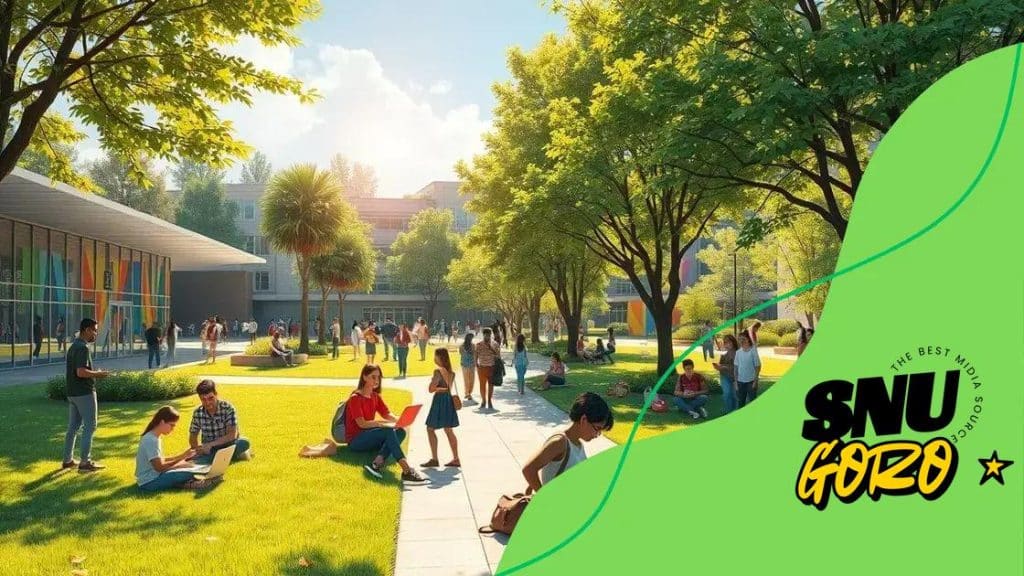Free community college proposals: A pathway to education

Free community college proposals eliminate tuition costs for students, increasing access to education, improving enrollment rates, and supporting local economies while overcoming challenges like funding and quality maintenance.
Free community college proposals are generating buzz across the nation, aiming to remove financial barriers to education. Have you ever wondered how these initiatives can reshape lives and communities? Let’s dive in.
Understanding free community college proposals
Understanding free community college proposals is essential for grasping how they can transform access to education. These initiatives aim to eliminate the financial barriers that often keep students from pursuing higher learning.
When states or governments implement these programs, they open doors for countless individuals who previously considered college out of reach.
Free community college proposals typically involve legislation that covers tuition costs for eligible students. This means that students can attend college without worrying about tuition fees.
The idea is to provide an affordable pathway to education, allowing students to focus on their studies rather than their finances.*
Benefits of free community college
One of the major benefits is the potential to increase college enrollment. With costs covered, more students can enroll in programs that align with their career goals.
Additionally, many students can graduate without debt, which is a significant financial relief. Key benefits include:
- Increased enrollment rates among high school graduates
- Reduced student debt, allowing graduates to invest in their futures
- Improved workforce development with a more skilled labor pool
Understanding these proposals also involves recognizing their impact on the economy. By investing in education, states can foster a more educated workforce, leading to overall economic growth.
As more students graduate, communities benefit from a more skilled population, which can attract businesses and enhance local economies.
Moreover, free community college proposals help to level the playing field for students from low-income families. They offer equal access to education, which can break cycles of poverty and provide families with new opportunities. The hope is that education becomes a common right rather than a privilege.
State examples show varied success in implementing these proposals, allowing regions to refine their approaches based on what works best.
As policymakers continue to explore these paths, the potential for widespread educational reform remains significant, challenging us to rethink how education is valued in our society.
Impact on students and families
The impact of free community college proposals on students and families is profound. These programs aim to relieve the financial stress associated with higher education. By removing the burden of tuition fees, families can allocate their resources to other essential needs.
Positive effects on students
Students benefit greatly from these proposals. Many feel empowered to pursue degrees or certifications without the fear of accruing significant debt. This approach can motivate students to complete their studies and engage more deeply in their academic communities.
- Higher graduation rates due to reduced financial stress
- Increased enrollment in college programs
- Enhanced focus on studies rather than financial concerns
Moreover, students can explore various career paths that they may have previously deemed unrealistic due to financial constraints. With the support of free community college, many students can access quality education that aligns with their career goals. This fosters a culture of learning and ambition within families.
Families also experience a notable change. With tuition costs covered, parents can encourage their children to pursue education without worrying about crippling loans. This support can strengthen family bonds as parents take pride in their children’s achievements.
Additionally, the overall economic strain on families can lessen, allowing them to invest in other crucial areas like health care or homeownership. As educational access increases, families can look forward to a brighter future, fostering a sense of hope and ambition.
Overall, free community college proposals lead to a more educated population, significantly benefiting both students and their families. With educational opportunities increasing, families can break free from the cycle of poverty and create a better life for future generations.
Funding sources for free community college proposals
Understanding the funding sources for community college programs is crucial for their sustainability and expansion. Various avenues can support free community college proposals, and they often involve a mix of public and private investments.

Government funding
One primary source of funding comes from government allocations. Federal and state governments can provide direct funding to community colleges, enabling programs to be offered at no cost to students. This funding can cover operational costs, faculty salaries, and facility maintenance.
Another vital aspect is that some states have launched initiatives to match federal funding, increasing the available resources for local colleges. This collaboration can significantly boost a college’s ability to offer diverse programs.
Grants and donations
In addition to government support, colleges can seek grants from various organizations, including non-profits and foundations. These grants might focus on specific initiatives like STEM education or workforce training, and can provide critical resources to enhance program offerings.
Private donations also play a significant role. Many alumni and local businesses contribute to their community colleges, recognizing the value these institutions bring to their communities.
Such contributions can create scholarships or fund specific projects that improve student experiences.
Tuition revenue and partnerships
Although the programs may be free for students, community colleges can still generate revenue through other offerings. Tuition for non-degree programs, continuing education, and workshops can supplement funding.
Establishing partnerships with local businesses can also enhance educational opportunities and secure additional funding.
Ultimately, the balanced mix of these funding sources ensures that community colleges can provide accessible education without imposing financial burdens on students.
By exploring multiple avenues, colleges can maintain and improve the quality of their educational programs, paving the way for a more educated and skilled workforce in the community.
Challenges facing implementation
While free community college proposals offer exciting potential, they also face significant challenges during implementation. Understanding these challenges is crucial for policymakers and educational leaders.
Funding limitations
One of the largest hurdles is securing adequate funding. Many states and local governments struggle with budget constraints, making it tough to allocate resources for free community college proposals.
In some cases, there are competing priorities that take precedence over education funding, leading to uncertain prospects for these initiatives.
Overcoming funding limitations often requires innovative approaches, such as public-private partnerships, but these require additional planning and cooperation among stakeholders.
Awareness and accessibility
Another challenge is raising awareness about the programs. Many students and families may not know they qualify for free community college proposals or how to apply.
Accessibility issues can hinder enrollment, especially for disadvantaged populations who may require extra support navigating the application process.
To combat this, colleges need to invest in outreach efforts to spread the word about available opportunities. This can include community workshops, school visits, and collaboration with local organizations dedicated to education.
Quality of education
As colleges expand due to increased enrollment, maintaining the quality of education becomes another pressing challenge. With more students, resources can become strained, leading to larger class sizes and potential reductions in student support services.
Colleges must find a balance between accessibility and the quality of the academic experience they offer.
Additionally, colleges need to continuously evaluate and improve their programs to meet the demands of the job market. This ensures that students are receiving relevant education and skills to thrive in their chosen fields.
Overall, while free community college proposals can create significant benefits for students and families, addressing these challenges is essential to make these programs sustainable and effective in the long run.
Success stories from states with free community college proposals
Success stories from states with free community college proposals highlight the positive impact these initiatives can have. Several states across the U.S. have implemented these programs, showcasing how effective they can be in increasing access to higher education.
Tennessee promise
One of the most well-known programs is the Tennessee Promise. This initiative provides free tuition for students attending community colleges in Tennessee. Since its launch, the program has significantly increased enrollment rates among high school graduates.
More students are now pursuing higher education, often leading to better job opportunities and improved economic conditions in their communities. Key outcomes include:
- A 40% increase in the number of first-time freshmen entering community colleges
- Higher retention rates among students
- Increased completion rates for associate degrees
California community colleges
California has also made strides with its free community college proposals called the California College Promise. This program allows students to cover their tuition costs for up to two years.
It has successfully lowered barriers for many, especially those from low-income backgrounds. Students are now more likely to complete their degrees and stay in school, thanks to reduced financial pressures.
Statistics show that approximately 40% of students in this program complete their degrees in three years, which is significantly higher than the national average.
New york’s excelsior scholarship
Another successful initiative is New York’s Excelsior Scholarship, which offers free tuition at public colleges for families earning up to a certain income level.
This program has attracted many students who otherwise might not have considered college. By easing the financial burden, New York has seen a rise in enrollment while also encouraging students to remain in-state for their education.
These success stories from states with free community college proposals illustrate the potential for transformation in higher education accessibility. They encourage other states to consider similar initiatives, ultimately aiming to make education more available to everyone, regardless of their financial status.
In conclusion, free community college proposals have opened doors for many students and families, changing the landscape of education in the United States.
By reducing financial barriers, these programs promote higher enrollment and graduation rates, benefiting individuals and communities alike. States like Tennessee, California, and New York have shown that such initiatives can thrive when supported by adequate funding and outreach efforts.
As more states consider similar proposals, the potential for a more educated workforce and stronger economies continues to grow. Everyone deserves a chance to pursue their educational goals, and free community college programs help make that a reality.
FAQ – Frequently Asked Questions about Free Community College Programs
What are free community college programs?
These initiatives allow students to attend community colleges without having to pay tuition, making education more accessible.
Which states have successful free community college programs?
States like Tennessee, California, and New York have implemented successful programs that have increased enrollment and graduation rates.
How do these programs impact financial burdens on families?
Free community college programs significantly reduce the financial strain on families, allowing students to focus on their studies instead of tuition costs.
What are the challenges in implementing these programs?
Key challenges include securing funding, raising awareness among potential students, and maintaining educational quality amidst increasing enrollment.





